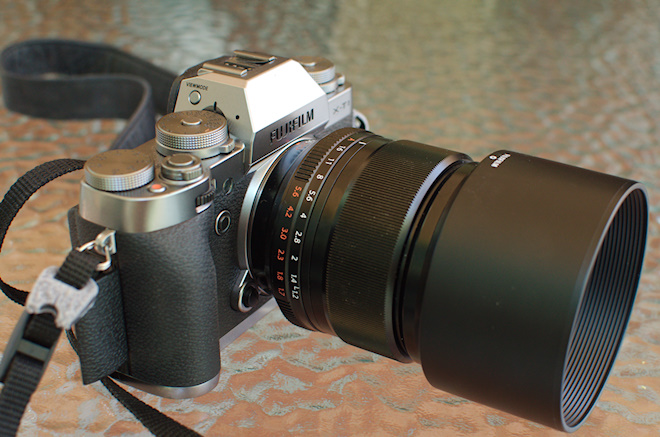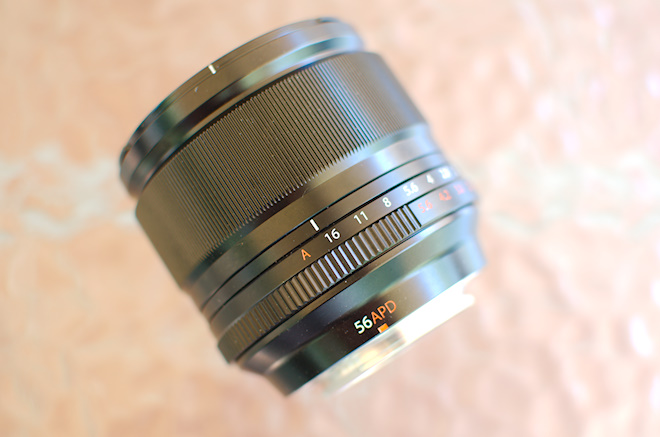The relationship between aperture and depth of field is one of the first things you learn when you start to take photography seriously.
Controlling this is relationship is a good portion of making your pictures look more professional. A narrow aperture means more of the photograph will be in focus, a wide aperture creates those lovely out of focus backgrounds and keeps just the subject sharp.
Portrait photographers have to balance keeping the aperture of their lens low enough to blur details behind the person they’re shooting and keeping the whole face in focus. Having a speckled ‘bokeh’ backdrop is no use if the ears are slightly out of focus too.
Which is why Fujifilm’s latest high speed lens, the XF 56mm 1.2 R APD, includes a built-in ‘apodisation filter’ designed to both enhance image sharpness at the wide apertures used for portraiture and simultaneously smooth the bokeh in the background.
And it works. The bokeh really is even creamier and smoother than the standard XF 56mm lens (which also has an F1.2 aperture). It’s best to let the pictures do the talking here, so click through the sample gallery below:
The lens itself is a 56mm piece of glass which, thanks to the APS-C sensor in Fujifilm X-Series cameras is the equivalent of an 85mm lens on a traditional film camera. It’s a popular prime for shooting people, and the massive F1.2 aperture makes it incredibly fast too, as happy with low light reportage-style snaps popular with wedding photographers as it is with posed studio pics.
Despite the wide aperture, there’s no vignetting or visible distortion around the edges of the frame.

It’s also solidly built with an all-metal case, but doesn’t feel heavy. Indeed, it’s almost perfectly balanced against a Fujifilm X-T1 body. It has a manual aperture ring which includes an automatic setting for shooting in shutter priority modes – but like most this can be frustrating as it can’t be locked off. Using the 56mm APD lens for street photography is likely to result in a few underexposed pics if you grab the camera too quickly and accidentally twist the aperture ring.
That’s not the only reason that you might be better off with something else for non-studio shots: the APD filter works its magic by slightly dimming the lens. Sadly that interferes with Fujifilm’s phase detection autofocus system on the X-E2 and X-T1 cameras, which have a special section in the centre of the sensor for speeding up autofocus and tracking moving subjects. Essentially, with the 56mm APD you’re stuck with the contrast detection AF system common to all mirrorless cameras, rather than the phase detection system in traditional SLRs and newer mirrorless too.

The 56mm APD is still fast to focus – indeed, we managed to get some great wildlife shots with it at a game park over Christmas – but it can’t track moving subjects between frames in the same way as other lenses, including the non-APD 56mm lens already available.
With those caveats in mind it’s obvious that the APD lens isn’t for everyone, even if you’re in the market for a 56mm prime. Nine out of ten folk will be better off with the almost identical XF 56mm 1.2 R, which costs R10 999. But if you make your living from stills and portraits the APD variant, at R17 999, is pricey but also the best.
[symple_box style=”boxinfo”]
Key features:
Price: R17 999
Mount: Fujifilm X-Mount
Aperture: F1.2-F16
Focal length: 56mm (85mm equiv)
Configuration: (11 elements in eight groups with apodization filter)
Angle of view: 28.5 degrees
Aperture control: Seven blade
Filter size: 62mm
Dimensions: 73.2×69.7mm, 409g
[/symple_box]









